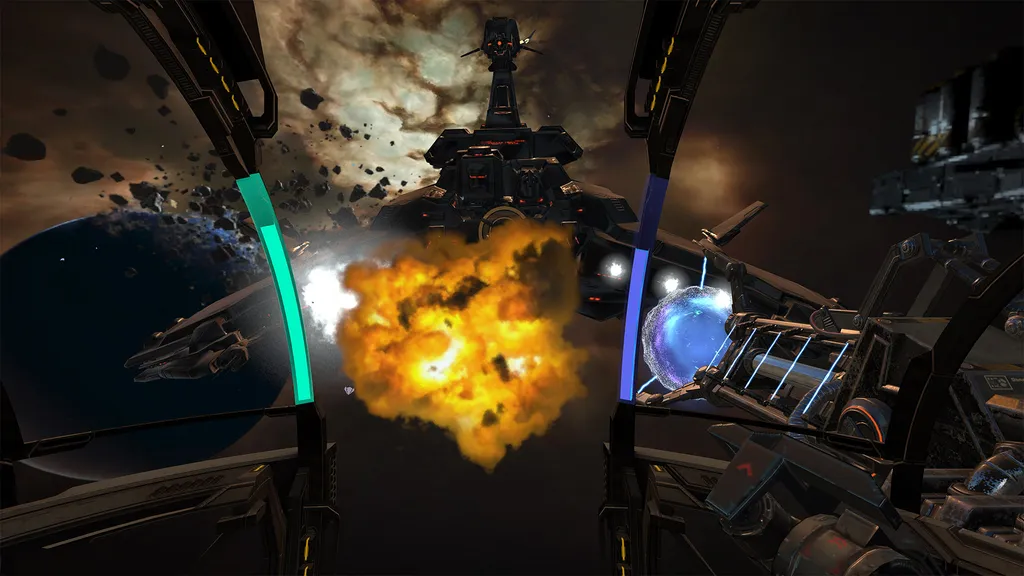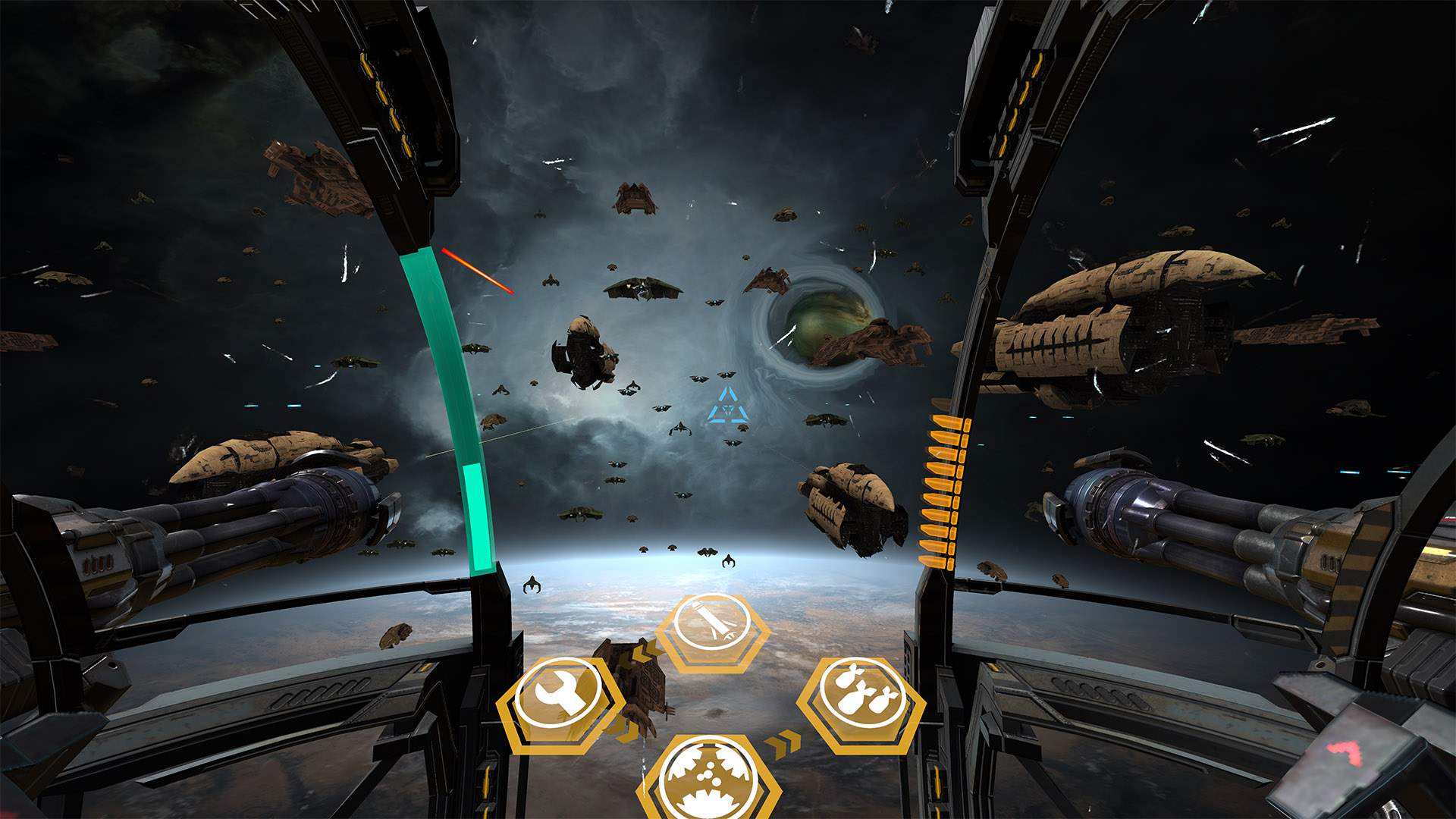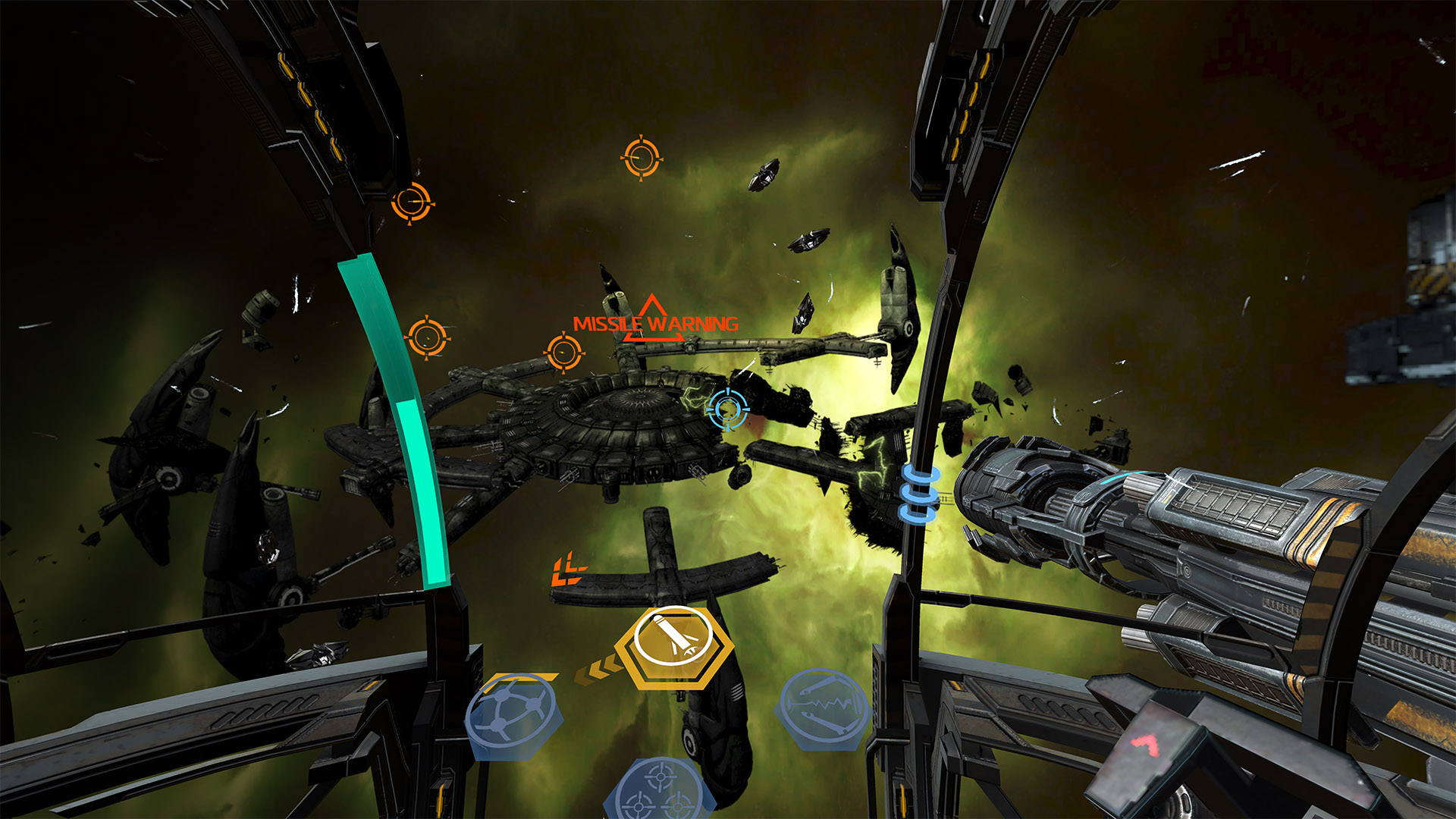There was a time when Gunjack was the most polished, lavish VR game available. Initially releasing on Gear VR as one of the first titles from a big studio — EVE Online creator CCP Games — it scratched the surface of what was to come from AAA developers: richly detailed graphics, slick production values, and fine-tuned mechanics, even on mobile VR. It didn’t blow anyone away, but it was a good start.
Gunjack 2 arrives roughly a year on, and expectations have shifted a little. There are now countless games like the original on mobile VR platforms, and a sequel would need to provide a lot more depth to be a worthwhile proposition. CCP has certainly put the effort in to make a worthy follow-up, but the foundation the game’s built upon only allows for so much innovation.
Exclusive to Google Daydream for the time being (the original game came to basically every headset), Gunjack 2 has a few new tricks that are likely a direct response to criticisms of the first game. There are two main modes here, one which offers the same point-scoring arcade gameplay of the original, and a more focused, varied offering for those that tire of straight-up wave shooting.
The latter is the game’s campaign mode, which features nine levels lasting about an hour in total. Yes, that’s shorter than the original, but this is only where fans will be spending a fraction of their time with the game, should they choose to keep playing once the credits role.
While the game initially seems identical to the original, bar swapping out head-tracked aiming with moving the Daydream remote, it quickly starts to differentiate itself. There are cutscenes inbetween levels, for starters, that introduce you to a crew of Gunjacks working aboard the same mining vessel, swapping stories about their most epic encounters, not all of which are entirely factual. The journey they take you on is an amusing tour of the EVE universe, a side to the sci-fi behemoth you likely won’t have seen before.
The handful of missions make a deliberate attempt mix things up level-by-level. While the first few encounters have you taking down perfectly synchronized swarms of ships, later objectives involve blasting away asteroids, gathering materials, and, of course, fighting off giant bosses.
As an experience it’s atmospheric and soberingly isolating. You’ll have constant chatter with your squad on comms but staring out into the depths of space on your own has an element of tranquility. That is until bad guys start shooting at you.
Bolstering the variety is a new loadout system, which gives you three power-ups that you activate by swiping on the touchpad, and a shield that’s activated by tapping it. In the campaign, these are pre-defined and usually consist of repairs, a new weapon type, and a bomb or something of similar effect. Experimenting with new power-ups each level is fun, though they don’t truly mix up the experience in meaningful ways. You’ll have your favorites and be disappointed when a mission doesn’t use any of them, especially the repairs which become a crutch in most levels.
The shield, however, causes real problems. Tapping the touchpad activates it, while clicking the touchpad fires. Putting your shield up takes away your ability to fire, and swapping between them takes a second, which is time you sorely need with your back against the wall. The game really struggles with this input and you’ll regularly find yourself accidentally switching between shields and firing, with frustration following.
Even with these issues, though, there’s only so much fun you can really have with Gunjack 2’s campaign. Removing the score-fueled element of the original makes this a more mindless, less performance-driven experience and some would call that a step back.
Fortunately that style of play is alive and well in the game’s weekly shifts. These are a set of missions that are refreshed every week and push the player to score high by blasting away as many enemies as possible. It’s a great way to extend the life of the game, and you get to choose your own loadouts for this mode. If you enjoyed the more competitive aspect of the original, I’d even recommend skipping the campaign and spending the bulk of your time here.
Gunjack 2 is a worthy follow-up to the original game and a rock solid shooter, although it’s still not anything you haven’t seen in a number of other mobile VR apps. It’s been polished until it shines, but is far from the most exciting use of the Daydream we’ve seen so far. Those that enjoyed the point-driven thrill of the first will find more of the same here, but if you’re tired of gallery shooters then you best steer clear.




























